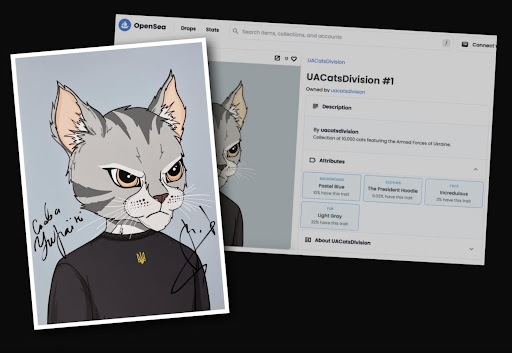NFTs don’t die, they evolve

As of January 2022, the NFT market has fallen 97% from its peak, with artworks and collectibles seeing their prices fade massively from millions of dollars to barely a few hundred dollars, NFT sales volumes have also gone from nearly $20 billion in January to under 466 million in September, when the average price of most NFT sales plunged 92%.
All these events seem to stand as proof that the NFT market is dying, but is it actually the case?
The answer is simple: NFTs don’t die, they evolve.
It’s not about overpriced pictures of Bored Apes anymore; NFTs are now transforming into a useful instrument that can solve pain points in various industries and generate new opportunities for businesses.
The NFT market remains resilient despite the crypto winter
NFTs are not dead and we have three main reasons:
1. Industry giants investing heavily in NFTs and Web3 in 2022
Forum and news site Reddit integrated an NFT marketplace called Vault in November 2022, generating over $10.5 million in transaction volume. In August, wearables and shoemaking giant Nike generated around $1 billion in secondary market revenue through NFTs.
Nike is part of the growing list of fashion designers offering NFTs and digital apparel, such as Dolce & Gabbana, Tiffany & Co and Gucci. Besides fashion powerhouses, coffee chain giant Starbucks opened its long-awaited program: Odyssey, which allows customers and employees to earn loyalty rewards with NFTs in the form of collectibles.
Big brands leveraging non-fungible tokens to transform their marketing strategies has created a lot of competition in terms of how companies can use NFTs in unique ways. This in turn has spurred further improvements in the underlying technology, and this sector will no doubt continue to undergo further development.
2. NFTs are a perfect match for the play-to-earn gaming sector
NFTs are more versatile than many people realize. The use of NFTs extends beyond digital collectibles and art, as they are useful tools that can be used across different industries in the traditional world, including fashion, healthcare, supply chain and gaming.
The latter can be a huge focal point for both NFTs and games, because NFTs allow players to earn real value by playing and investing time in the games, whether those games are play-to-earn titles or have incorporated NFTs as elements such as skins, collectibles or currencies.
Data from 2021 saw the play-to-earn market worth $800 million, with popular titles such as Axie Infinity, The Sandbox, Illuvium and League of Kingdoms leading the way. The market is expected to reach $2.7 billion by 2028, according to predictions.
3. NFTs are useful instruments for fundraising, especially charity
2021 was the year of hyped projects and influencers who made fortunes overnight by selling overpriced NFTs, creating a stigma for the general public. But now that NFTs are out of their original craze, they’ve become the new frontier for fundraising, including for charities.
For example, last year we saw renowned digital artist Beeple sell one of his NFT works for $6 million, after which he donated the funds to the cause of fighting climate change. Today, there are entire platforms out there that use NFTs to donate crypto funds to non-profit organizations.
NFTs have had a major impact on, among other things, animal protection groups. In June 2022, Australia Zoo hosted an NFT fundraiser on the eco-friendly Blockchain Algorand in June, with sales going to animal hospitals in the country.
Overall, the biggest benefit of using NFT auctions is that they allow organizations to reward donors with NFTs after making their donations. These NFTs can be used to promote physical goods, access to events or an effort towards the fundraising project.
Final thoughts: the evolution of NFTs in 2022
The NFT market today has reached the stage where we are witnessing the emergence of many use cases that demonstrate the potential of non-fungible tokens. It is not only as a way for companies and industries to solve pain points and generate new revenue opportunities. NFTs are also used to protect wildlife, form better charities and support artists and content creators around the world.
And there is still plenty of room for growth: the global NFT market is expected to reach $211 billion by 2030. The demand for digital art is one of the main drivers of this growth. But to achieve results beyond that, the NFT industry must demonstrate its new value to the world.
LOAD
. . . comments & more!























